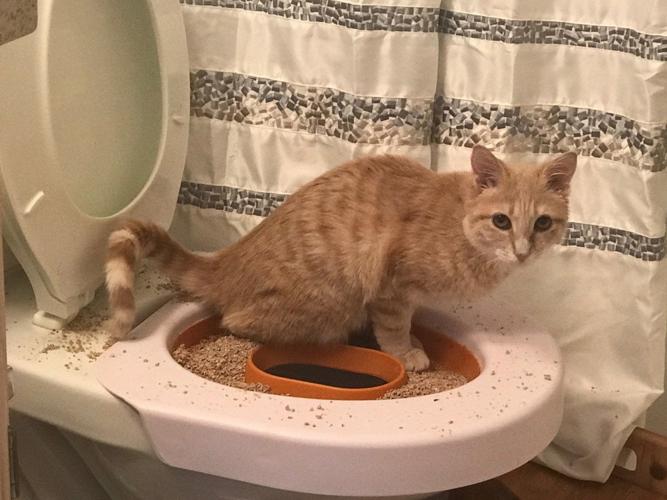Why Flushing Cat Poop Down Your Toilet Is Bad - Tips for Proper Disposal
Why Flushing Cat Poop Down Your Toilet Is Bad - Tips for Proper Disposal
Blog Article
The article author is making a few good pointers related to Don’t flush cat feces down the toilet as a whole in the content which follows.

Intro
As pet cat owners, it's essential to bear in mind how we take care of our feline friends' waste. While it may seem hassle-free to purge cat poop down the commode, this practice can have destructive consequences for both the setting and human wellness.
Environmental Impact
Purging feline poop introduces hazardous virus and parasites into the water, presenting a substantial danger to water ecosystems. These pollutants can adversely impact marine life and concession water top quality.
Health Risks
Along with ecological issues, purging pet cat waste can likewise posture health dangers to people. Pet cat feces may include Toxoplasma gondii, a bloodsucker that can create toxoplasmosis-- a potentially severe health problem, particularly for expecting ladies and people with damaged body immune systems.
Alternatives to Flushing
Fortunately, there are much safer and a lot more liable means to deal with feline poop. Think about the adhering to alternatives:
1. Scoop and Dispose in Trash
The most common method of getting rid of pet cat poop is to scoop it into a biodegradable bag and toss it in the trash. Be sure to use a specialized trash scoop and throw away the waste promptly.
2. Use Biodegradable Litter
Opt for eco-friendly feline clutter made from products such as corn or wheat. These clutters are environmentally friendly and can be securely thrown away in the garbage.
3. Hide in the Yard
If you have a backyard, take into consideration burying feline waste in a designated area away from vegetable gardens and water resources. Make certain to dig deep adequate to stop contamination of groundwater.
4. Mount a Pet Waste Disposal System
Purchase a family pet waste disposal system particularly developed for cat waste. These systems use enzymes to break down the waste, reducing odor and ecological influence.
Verdict
Accountable animal ownership expands past supplying food and shelter-- it also entails correct waste monitoring. By avoiding flushing cat poop down the commode and selecting alternate disposal methods, we can minimize our environmental impact and protect human wellness.
Why Can’t I Flush Cat Poop?
It Spreads a Parasite
Cats are frequently infected with a parasite called toxoplasma gondii. The parasite causes an infection called toxoplasmosis. It is usually harmless to cats. The parasite only uses cat poop as a host for its eggs. Otherwise, the cat’s immune system usually keeps the infection at low enough levels to maintain its own health. But it does not stop the develop of eggs. These eggs are tiny and surprisingly tough. They may survive for a year before they begin to grow. But that’s the problem.
Our wastewater system is not designed to deal with toxoplasmosis eggs. Instead, most eggs will flush from your toilet into sewers and wastewater management plants. After the sewage is treated for many other harmful things in it, it is typically released into local rivers, lakes, or oceans. Here, the toxoplasmosis eggs can find new hosts, including starfish, crabs, otters, and many other wildlife. For many, this is a significant risk to their health. Toxoplasmosis can also end up infecting water sources that are important for agriculture, which means our deer, pigs, and sheep can get infected too.
Is There Risk to Humans?
There can be a risk to human life from flushing cat poop down the toilet. If you do so, the parasites from your cat’s poop can end up in shellfish, game animals, or livestock. If this meat is then served raw or undercooked, the people who eat it can get sick.
In fact, according to the CDC, 40 million people in the United States are infected with toxoplasma gondii. They get it from exposure to infected seafood, or from some kind of cat poop contamination, like drinking from a stream that is contaminated or touching anything that has come into contact with cat poop. That includes just cleaning a cat litter box.
Most people who get infected with these parasites will not develop any symptoms. However, for pregnant women or for those with compromised immune systems, the parasite can cause severe health problems.
How to Handle Cat Poop
The best way to handle cat poop is actually to clean the box more often. The eggs that the parasite sheds will not become active until one to five days after the cat poops. That means that if you clean daily, you’re much less likely to come into direct contact with infectious eggs.
That said, always dispose of cat poop in the garbage and not down the toilet. Wash your hands before and after you clean the litter box, and bring the bag of poop right outside to your garbage bins.
https://trenchlesssolutionsusa.com/why-cant-i-flush-cat-poop/

As an enthusiastic reader about Don’t flush cat feces down the toilet, I think sharing that excerpt was a smart idea. Enjoyed our piece of writing? Please share it. Help someone else discover it. Bless you for your time. Visit us again soon.
Rates Report this page